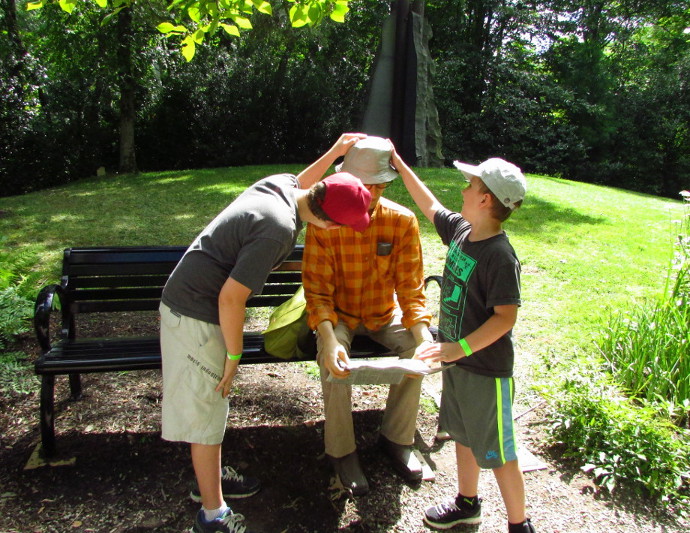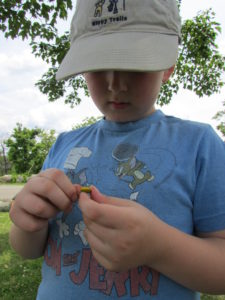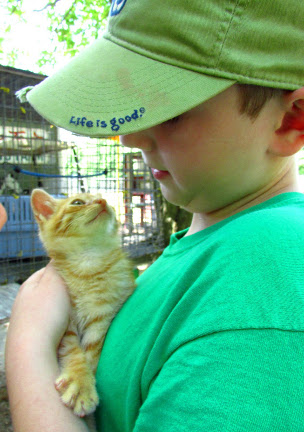What my kids taught me about being a mom of two, sometimes intense, but very happy creative kids.

I have two boys. Both of them are happy, and both are very creative, but both are so different from one another! Over the years they have taught me the rules of what makes them happy in their creativity, and what doesn’t. I wanted to share these tips that I learned from them with the rest of the world, so here they are.
1. Creativity comes in all shapes and colors, and it doesn’t always mean art, or drawing, or painting, etc. My older one loves to draw and paint. He can talk about painting techniques for a long period of time, he can discuss his plans for the newly purchased giant pack of polymer clay, and gets excited over a new notebook and pencils, he can spend a two hour ride telling me the plot of a book he is planning to write. When you bring up any of those things to my younger child, he looks like he wants to vomit. Really. That doesn’t mean that he is not creative. With him creativity comes in a different package. He is a musician, and will play drums for hours, or stage puppet shows, make fake food from dough and dried beans or prepare real meals (with my help). He loves chemistry and to see chemical reactions happen, we try to do a few a week. Creativity comes in all sorts of packages, everyone different, and none of them standard, that’s what makes it so fun.
2. Whatever it is your child enjoys doing to express his or her creativity, make the space available to do it. If it’s art, then have art supplies within an easy access, if it is music, then it’s musical instruments. If it is sculpture, then have the clay on hand for whenever inspiration strikes. Your kid loves chemistry, then have Borax, baking soda, starch, white glue, wooden mixers, cups, measuring supplies, food coloring, citric acid, vinegar, safety gear, and whatever else you feel is necessary to make chemistry happen. If your child is a blooming architect have a bin of mismatched Lego within easy reach. Whatever their passion is, it helps to have a safe, clean, friendly environment to practice their self expression.
Another important thing to note is time. In our daily fast paced lives sometimes it is difficult to find the time for creativity. Between classes, activities and birthday parties, the kids are becoming increasingly busy by the day. Finding the window of time to do something that the child is passionate about right then and there is very important.
3. Kids mimic their parents. If they see you read, they want to read, if they see you knit, they are more likely to want to give it a try. Whatever it is they like, get to know it. Read about it, do some research, get into it with them!! It is so much more fun to share these things together. If it is cooking, then be the ‘sous’ chef, because, you know, when they are six they still need a ‘sous’ chef. If it’s puppets, or sculpture, or chemical experiments, or any other such wonderful endeavors, be there to do it with them and in some cases to help them, or supervise them.
We also sometimes like to do family drawing times, when we’d get some supplies out on the table and sit together as a family and draw or paint whatever comes to mind, sometimes we would swap pictures and help each other out. It is a lot of fun to do together. Everyone here enjoys those evenings, even the kid that wants to throw up at the thought of painting.
4. While I think that parent participation is important and makes it more fun, be careful as to what you say and how you dole out advice regarding whatever creative project your kid is working on. It is one of my hardest lessons that I had to learn with my older son. Whatever it is that he was working on, usually a drawing or a story, if I would make a suggestion that sounded like an innocent enough idea, he would often get upset, put his pencil down, and not come back to that painting. I learned to encourage, but not suggest anything else other then what he thought should be in the story or on the drawing. Just being there, observing his wonderful creative process and enjoying it together was enough. Often, it was about him wanting the painting (or whatever it was) to come a 100% from his ideas, and my ideas messed that up. Be sensitive and aware of what your child’s process is.
5. It is often important to connect with other kids that enjoy doing the same things. So get out there, and join some clubs and classes that your kid likes. They should enjoy the company of their peers, and working together is a great skill to have!
6. When joining clubs or classes make sure that the teacher you choose for your child is also sensitive to his or her needs. If a teacher is strict, or your kid feels the teacher isn’t engaging enough, then quit and find a different class. There are hundreds wonderful teachers out there, each with their own teaching methods. Whatever your kid’s learning style is, make sure that the teacher and the child are a good match.
As an example, when my son was six, we joined an art class. It was ridiculously expensive, and I thought the teacher was amazing. She was young, full of energy and sang through the class. My son didn’t agree. He thought she was strict, and didn’t leave him room for self-expression. It made him upset enough to stop drawing entirely for half a year. We found a much more relaxed teacher, that made him blossom.
7. Sometimes creativity isn’t about a particular, well defined idea. Sometimes it is about making a giant mess. Think finger painting or that time my kid spilled glop he made all over the kitchen, or when they make happy mud piles in your yard until the ground looks like there is quick sand in there that can suck you right up. Also, sometimes just talking about a particular project can be fun, we don’t always get to do all the projects we discuss, like that novel that my older son is planning to write one day. He does have all the characters and the plot developed because he knows he can discuss it with us anytime.
8. It is never about a finished product, but more about the process. Never judge how much your kid enjoyed something because the activity didn’t produce a stunning result. It isn’t about the finished result, it is about how he or she got there, and how much they enjoyed themselves along the way. Never, ever, say that you don’t like something they created!!!
9. They need down time. We go through dry spells, everyone does. Sometimes they will be writing, drawing, playing, designing, doing all these amazing things for a long stretch of time, but after they are done, they need a break. So for days after, they won’t come back to the activity that occupied their minds so intensely for such a long time. They need a break, and that’s ok. They will come back to it soon enough. However, sometimes my kids stop because the going gets tough. When the project becomes too difficult to enjoy. I usually wait a bit, and after some time offer them my help. Sometimes they take it and sometimes they don’t.
10. In the end it is all about doing what you like and liking what you do. Especially for children, when it comes to being creative, it should all be about fun and joy, not a competitive endeavor. It is absolutely amazing what kids can do when given the opportunity, and will surprise everyone!
Just a note: this is based on my opinions, experiences and views, and by no means to be used to determine your relationships with your children.

